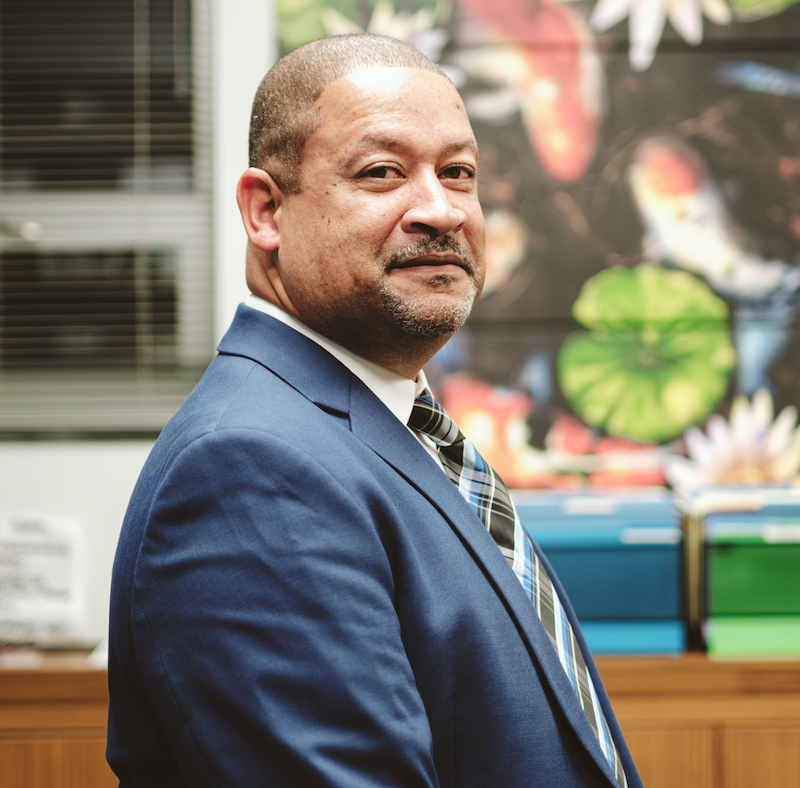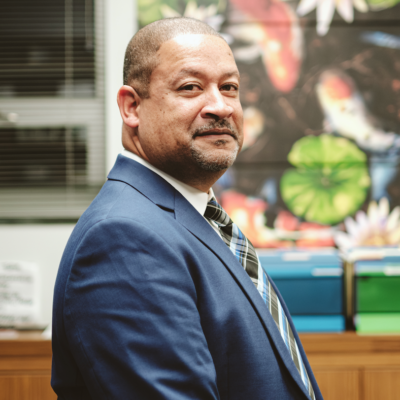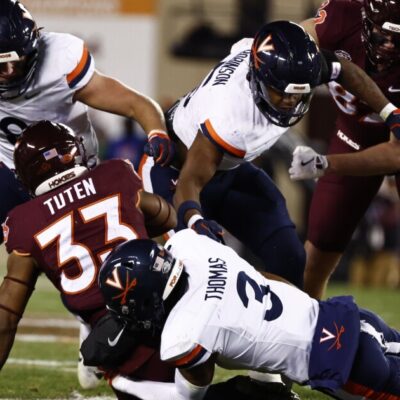Two decades before UVA welcomed its inaugural class, Thomas Jefferson wrote to Littleton Waller Tazewell, future Virginia governor, about his hopes for the University of Virginia.
“What was useful two centuries ago is now become useless,” wrote Jefferson. “What is now deemed useful will in some of its parts become useless in another century.” And while UVA’s founder and first architect was writing about science, his comments fit the 200-year debate over architecture at the University, a contest that pits tradition against utility and asks whether the University’s iconic look—bricks and pillars, porticoes and Palladio—is a functional model or a brand.
In truth, it has been both. Everyone agrees that the Lawn is an architectural gem, innovative for its time and beautiful still. But consensus splinters over what the Lawn means for UVA buildings today.
The University has offered many of the nation’s leading architects an opportunity to draw on Jefferson’s original vision, and frustrated several when they tried to push beyond the aesthetic template of the Lawn. Is a “Jeffersonian” structure one that hews to the classical style that T.J. so loved, or is it one that incorporates his love of the cutting edge and functional? Is the Lawn’s true heir Darden or Campbell Hall?
C-VILLE takes a closer look at 16 buildings that played prominent roles in the debate.—Chiara Canzi and Brendan Fitzgerald
THE CLASSICAL ENSHRINED
1822: Academical Village
/(FEATURE)/1_I-4-Neilson-Maverick-BL.jpg) |
Jefferson’s original UVA campus was designed to serve its architectural faculty and students. In 1817, Jefferson wrote to William Thornton, the architect of the U.S. Capitol, that the University’s buildings “should be models of taste & good architecture, & of a variety of appearance, no two alike.” In that way, the buildings themselves would serve as teachable structures—“specimens for the Architectural Lectures,” concluded Jefferson.
Jefferson asked Thornton and Benjamin Latrobe, who helped design the U.S. House of Representatives, to draw designs for the Lawn’s 10 Pavilions. Jefferson tweaked their drawings to reflect his original ambitions for the Pavilions, each styled according to one of the three classical styles of Greek architecture—Doric, Ionic and Corinthian.
The inaugural class of 1825, with 68 students, arrived prior to the completion of the Rotunda, Jefferson’s scale model of the Pantheon. Plans for the Academical Village placed the Rotunda at the north tip of the University; the structure faced south towards an open horizon. Jefferson never enjoyed the view from the steps of his masterpiece, however: The Rotunda was completed after his death, in 1826.—B.F.
BABY STEPS OFF THE LAWN
1877: Brooks Hall
/(FEATURE)/2_II-15-000002963_0007.jpg) |
Now home to UVA’s Department of Anthropology, Brooks Hall was initially somewhat isolated from the rest of Thomas Jefferson’s Academical Village. Located between the Lawn and what would become one of the most popular gathering spots in town, the Corner, Brooks Hall was the first building commissioned by a donor—a trend that continued through the years, arguably at the expense of buildings’ design and utility. Lewis Brooks, a textile manufacturer from Rochester, New York, gave the University $45,000 for the construction of a Brooks Museum of Natural Science, which modernized the science program.
The building was a Gothic structure with Notre Dame-style gargoyles and a few nontraditional elements—for instance, the names of more than a dozen natural scientists, from Aristotle to Charles Darwin. However, in keeping with the Academical Village, the building functioned as a place for both students and faculty to come together and learn democratically.
In 1977, the UVA Board of Visitors (BOV) decided that Brooks Hall’s peculiar facade distracted attention from the Rotunda, and resolved to demolish the building by 1980. However, vocal protesters staved off demolition, and the building was placed on the Virginia Landmarks Register.—C.C.
TAMPERING WITH JEFFERSON’S VISION
1898: Cabell, Cocke and Rouss halls
/(FEATURE)/3_III-1-000003109_0009.jpg) |
UVA’s first major opportunity to recreate and expand on Jefferson’s vision came in 1895, after the near-total destruction of his crowning architectural achievement.
On October 27, faulty wiring started a fire in the Rotunda annex—designed by Robert Mills and added in 1853 to the north side of the Rotunda, to provide more classroom space. Professor William Echols used dynamite with the hope of separating the annex from the Rotunda and saving the latter. The blast, however, exposed the Rotunda to the blaze, which consumed all but the brick walls.
Within weeks, the BOV had hired the McDonald Brothers, architects based in Kentucky, to restore the Rotunda. However, the McDonalds were fired months later, after inspection of the Rotunda showed that steel supports for the building’s roof were “too weak.”
The BOV promptly retained architects Charles McKim, William Mead and Stanford White for the job. The trio, whose credits include the National Museum of American History, was similarly loyal to Roman and Greek architecture—which kept Jefferson’s aesthetics alive and well through the completion of Carr’s Hill in 1909.
The BOV also asked Stanford White to close the southern edge of the Lawn with a trio of new academic buildings—Cabell, Cocke and Rouss halls. (In an early example of branding, Cabell Hall originally featured a Palladian arched window in its ceiling.) The buildings transformed the Lawn from a horizon, as Jefferson envisioned, to a “Roman forum…a much more urban idea,” according to UVA architecture professor Bill Sherman. The buildings also obscured campus views of a nearby neighborhood populated by working-class African Americans—including several UVA employees.—B.F.
CLEARING THE PRESIDENT’S PERCH
1909: Carr’s Hill
/(FEATURE)/4_III-37-000003490_0002.jpg) |
In 1867, the University bought the property at Carr’s Hill for $10,000 with plans to expand student housing and, according to the minutes of the Board of Visitors in 1871, “to prevent the occupation of the grounds by objectionable tenants.” Before the construction of the president’s residence, Carr’s Hill provided student dorms and, during the Civil War, was used for military drills. The stretch of land along Rugby Road became the home of Fayerweather Hall (now the McIntire Department of Art) and the University of Virginia Art Museum.
Carr’s Hill became the residence of the University president, and was built based on first president Edwin Alderman’s memory of a house he saw in New Orleans. The house was designed by Stanford White (see 1898) and finished after his death in 1906. The 10,000-square-foot house is reminiscent of Jefferson’s aesthetics both in materials and colors: white Doric columns and the typical red Virginia brick. The house’s location, atop a hill overlooking the Lawn and the Rotunda, places it symbolically above other structures and buildings as a reminder of its principal tenant.—C.C.
CONNECTING WITH CHARLOTTESVILLE
1916: Senff Gates
/(FEATURE)/5_IV-21-000003490_0006.jpg) |
In the early 20th century, as the City of Charlottesville expanded, UVA became a more involved neighbor. Constructed at the University’s eastern entrance, the Senff Gates represented the physical connection between Charlottesville and the growing campus. Designed by Lincoln Memorial architect Henry Bacon, the Senff Gates were modeled after Harvard University’s gates and named for Charles Senff, a University alum, whose wife donated $10,000 for the project.
During the same time period, the Corner underwent a similar transformation: The road from the gates to Carr’s Hill was paved, and a set of businesses dedicated to serving students settled on University Avenue. UVA’s expansion into the surrounding community never stopped (see sidebar).—C.C.
BUILDING FOR SPORT
1924: Memorial Gym
/(FEATURE)/6_000008560_0001.jpg) |
In 1921, under the direction of President Edwin Alderman, the University Architectural Commission surveyed multiple sites for a new, much-needed gymnasium that could host a vast array of sportive student activities. According to the Architectural Commission, the gymnasium’s location was just as important as its exterior design. The site, nestled between Carr’s Hill and Ivy Road, was ultimately chosen for its expansion potential—to handle between 500 and 1,000 men—and its proximity to Grounds and dormitories.
“Since the building will be the largest and most imposing at the University, with the exception of the Rotunda, it is important that it be given a beautiful setting and its architectural qualities thereby enhanced,” read the Board of Visitors’ minutes of November 29, 1921.
Designed by architect Fiske Kimball, the gym had an estimated cost of $259,000, funded in part by students who donated $146,000. Originally, it had the sizable University Pond in front of its doors, which, according to the BOV, gave the structure “a charming reflection and an approach of unusual beauty.” The pond was later filled in.—C.C.
HOUSING THE HOOS
1928: Monroe Hill and dorms at UVA
/(FEATURE)/8_Brown-01.jpg) |
Believe it or not, UVA fraternities were not intended for Rugby Road. Initially, frats like Delta Psi and Phi Kappa Si were based on Dawson’s Row, a half-dozen brick houses built during the mid-1800s, located behind what is now Bryan Hall. (Four buildings were reconstructed in place of the original site, and now include the Lewis P. Jackson Cultural Center and the Office of African American Affairs.) By the late 1920s, however, the UVA student body had outgrown both the Academical Village and the few dorms at Dawson’s Row.
UVA began its plans for more student housing in the late 1920s—the same time that it began to look for a location for a football stadium to replace Lambeth Field. Rather than turn Monroe Hill over to fraternities, the BOV dedicated the land to dorms, and the Architectural Commission designed what is now called Brown College. Like the buildings near Alderman Library, Brown College frames a grassy court that looks west across Emmet Street to the McCormick Road dorms, built in 1950. Meanwhile, Scott Stadium, the successor to Lambeth Field, had found a home southwest of Monroe Hill. Built in 1931, the stadium later became the centerpiece for the Carl Smith Center, a group of athletic buildings named for the former UVA Football player whose $25 million donation in 1997 funded the stadium’s 15,000-seat expansion.
McCormick was the second massive housing site constructed to house World War II vets who attended UVA on the G.I. Bill. The first, Copeley Hill, was built in 1946 and cost $150,000—according to a UVA housing history website, “a twentieth of the price” of the McCormick dorms. The year after McCormick, UVA opened its first female dorm—Munford Hall, named for the first female member of the BOV, Mary Cooke Branch Munford. Built nearly two decades before undergrad coeducation, Munford Hall housed female graduate students.—B.F.
TEARING DOWN JEFFERSON
1937: Alderman Library and Anatomical Theater
/(FEATURE)/7_IV-15-ald-construct-1937.jpg) |
In 1929, UVA’s student population surpassed 2,400. The book collection had also expanded, to nearly 200,000 volumes. Partially funded by a Public Works Administration grant as part of FDR’s New Deal, UVA began work on Alderman Library—a building that figuratively altered Jefferson’s plans for Grounds and literally destroyed one of his buildings.
UVA Architectural Historian Richard Guy Wilson writes that Jefferson “had envisioned expansion of the University in rows of buildings paralleling the range.” Landscape architect Warren Manning also envisioned such an expansion in his 1913 master plan, which placed an “educational group” of buildings west of the Lawn, a design that mirrored the Academical Village.
Instead, writes Wilson in his history of UVA, Alderman Library “physically reordered the grounds” when it was completed in 1938. Along with Peabody Hall and Miller Hall (demolished and replaced by the Small Special Collections Library), Alderman secured a large green space perpendicular to the Lawn, rather than parallel to it.
Alderman Library was one of several overseen by the UVA Architectural Commission—established in 1921 by President Edwin Alderman, “to ensure consistency and quality in the university’s architectural development,” according to a report by the Virginia Department of Historic Resources. The same commission agreed that the nearby anatomical theater, designed by Jefferson himself, didn’t suit its new neighbor, and demolished the building in 1939. The theater was designed in 1825 for Dr. Robley Dunglison, who told Jefferson that he could not perform medical procedures in his Pavilion X residence. The building is the only structure designed by Jefferson to be purposefully destroyed—a decision that will never be repeated, according to several architecture faculty members.—B.F.
BUILT FOR STUDENT LIFE
1958: Newcomb Hall
/(FEATURE)/9_000008560_0003.jpg) |
At UVA, you can take the buildings out of the Lawn, but you can’t take the Lawn out of the buildings. The sentiment is especially true in the short history of Newcomb Hall.
Named in honor of UVA’s second president, John Lloyd Newcomb, Newcomb Hall was intended to serve the same purpose as the Academical Village: It would be a place for students to congregate and exchange ideas. Newcomb also closely followed its predecessors’ materials. According to the September 1956 minutes of the Board of Visitors (BOV), the Buildings and Grounds Committee chose “to use in the construction of the new student activities building (Newcomb Hall) brick sample No. 4, as at present displayed opposite West Range, minus the dark headers, but with the mortar slightly darkened.” To aid the operating costs of the 165,000-square-foot building, the BOV approved a $14 Student Union Fee in 1958. The building closely follows the design and significant footprint of its neighbor, Memorial Gym, with long and narrow facades of dark brick interrupted by Palladian-style windows on the upper floors.
The same elements of utilitarian design that made Newcomb Hall a staple of the 1950s structures were resuscitated recently while planning for the building’s expansion. Estimated to cost between $16 million and $18 million and expected to be completed in the near future, Newcomb Hall’s new facade was not received with open arms. UVA Architect David Neuman presented drawings that depicted the new, two-story entrance with straight lines, long windows and a skylight. BOV members were not satisfied. “I just don’t think it says ‘University of Virginia,’” said member Robert Hardie and added that the “heavy” look of the addition seemed at odds with the rest of the building.—C.C.
MODERN REJECTION
1962: The Chemistry Building
/(FEATURE)/10_030_IV_B_635_1_K.jpg) |
Stepping stones between Jefferson’s classical aesthetics and modern structures like Hereford College (1992) and Campbell Hall’s additions (2008) are few and far between. The architect that came closest to re-interpreting Jefferson’s vision for modern times, according to UVA architecture professor W.G. Clark, was Louis I. Kahn, whose design for the UVA Chemistry Building lit the fuse for an architecture debate that would explode four decades later.
In 1961, the BOV hired Kahn to design a new Chemistry Building opposite the McCormick Road dorms, and he pursued modernism on a massive scale. Kahn turned to reinforced concrete rather than brick. His design featured a central structure rimmed with cylindrical towers, in a court framed by a larger building. The Chemistry Building evoked columns, but didn’t sport any.
The BOV minutes show no record of when UVA and Kahn parted ways, though apparently it was by 1963, when Kahn corresponded with Anderson, Beckwith and Haible—the firm that ultimately designed the Chemistry Building, which was finished in 1968. As for Kahn, he turned more attention to the National Assembly Building of Bangladesh, which features many of the same elements visible in his Chemistry Building design. Khan’s National Assembly Building took roughly two decades to construct, cost a reported $1.3 billion, and is considered to be one of the greatest achievements in modern architecture.—B.F.
RISE OF THE REVENUE MONSTERS
1965: University Hall
/(FEATURE)/11_000008560_0002.jpg) |
Built in response to the growing student population—and a logical successor to Mem Gym—University Hall officially opened its doors in 1965. With a $4 million construction cost, U-Hall was connected to the Rotunda architecturally (both sport a white dome) and symbolically, at the center of UVA’s burgeoning sports complex.
Still, it was already obsolete 40 years later: U-Hall’s capacity stood at slightly above 8,400. With a $35 million-gift by University alum Paul Tudor Jones II to honor his father, John Paul Jones Arena (JPJ) opened its doors in 2006. Designed by local firm VMDO and Ellerbe Becket, the $131 million arena seats nearly 16,000. It blends traditional elements—pergolas and red brick—with state-of-the-art amenities on a much larger scale than U-Hall.
Daniel Bluestone, UVA professor of architectural history, told the Washington Post that the arena was a “monster of a building…Jefferson on steroids,” and questioned UVA’s spending on an auxiliary structure. “What does it cost in current capital to endow a chaired professorship? Two or three million? Then ask yourself, ‘What would the University of Virginia look like with an additional 50 fully chaired professorships?’” he said.—C.C.
MODERNITY ACCEPTED (AND REVILED)
1992: Hereford College
/(FEATURE)/13_Hereford-02.jpg) |
Hereford College, a touchstone for one of UVA’s greatest architectural conflicts, opened in 1992. The residential college was built in the area of Gooch and Dillard dorms, a suburban residential campus designed by Edward Larabee Barnes. In 1989, five years after Gooch/Dillard opened, Barnes told Architecture magazine that he had “always been drawn to making things as simple as possible, if you can do that without making them inhuman or dull or oppressive.”
In 1993, New York Times architecture critic Paul Goldberger wrote that, for much of its modern history, UVA “cowered in fear of Jefferson, building banal structures of red brick.” The exception, said Goldberger, was the recently completed Hereford College. Hereford’s Runk Dining Hall is largely glass and steel; the dorms lack white columns and opt for non-uniform windows to maximize light and feelings of open space. Goldberger wrote that the college, designed by Tod Williams and Billie Tsien, was both a “contorted version of Jefferson’s rolling lawn” as well as the first structure to adequately interact with it.
Meanwhile, some UVA students lamented the dorm’s location, west of Scott Stadium and miles from social spots like the Corner and Rugby Road. Facebook reveals a number of students who still refer to their dorm assignment as “Heref#$%ed.”—B.F.
/(FEATURE)/12_UVA-Darden-Aerials-4-200.jpg) |
JEFFERSON GOES TO DISNEY LAND
1996: Darden School of Business
If people thought there was no such thing as too much Jefferson on Grounds, then Robert A.M. Stern’s sterile design for the Darden School of Business changed many minds. A New York Times critic called the $100-million-plus business compound—named after UVA President Colgate W. Darden Jr.—“one of the worst abominations of recent campus architecture.” The same article called the building’s general aesthetic “creepy.”
Darden is arguably too much of a good thing: a mere copy of the Academical Village, complete with a smaller, stockier Rotunda, and a Lawn that offers on-street parking. Stern told the Times that he wanted to create a structure that, “although nobody standing there thinks he’s on the Lawn, anybody standing there knows he’s at the University of Virginia.”—C.C.
A PUBLIC SPAT
2001-2010: South Lawn
/(FEATURE)/14_Aerials_4-2011_South_Law.jpg) |
In 2001, UVA hired James Polshek, a decorated architect with modernist tendencies, to design the $105 million South Lawn project. However, UVA and Polshek parted ways in 2005. Adam Goodheart wrote in the New York Times that the architect was “frustrated by the school’s refusal to approve any design that did not hew to a strict Classical palette of arches and columns.”
Following Polshek’s departure, 26 UVA architecture faculty members published an open letter in the Cavalier Daily and asked whether UVA risked becoming “a theme park of nostalgia at the service of the University’s branding.” Can a school adapt its curriculum to the future while rigidly recreating the past? UVA alums and architectural traditionalists responded that modernism was “shortsighted” and produced some “unfortunate consequences” at UVA. Their response commended UVA for Stern’s Darden and called Hereford College “unsightly and unpopular.”
UVA hired California-based Moore Ruble Yudell to finish the job, and asked the architecture firm to “seek inspiration from the composition of Jefferson’s original Lawn…without resorting to imitation.” A UVA website about the South Lawn’s design principles claims that the project’s spacial interplay and “use of pure geometries” link Jefferson with Louis I. Kahn—a bold comparison given Kahn’s history with the University. Incidentally, Charles W. Moore, a founder of Moore Ruble Yudell, was once a teaching assistant for Kahn.—B.F.
JEFFERSONIAN BY ANOTHER STYLE?
2008: Campbell Hall
/(FEATURE)/15_CampbellHall_2_WGClark_S.jpg) |
Faculty member W.G. Clark described the tension surrounding UVA architecture to the New York Times in 2006: “The university’s idea of a good building is more or less the opposite of what we teach.” However, while the South Lawn evokes both the pillared paths along the Academical Village with the warehouse traditionalism of the UVA research parks, the modernists among the architecture faculty found a way to practice what they preached.
In 2008, Clark designed a luminous modern addition to the Architecture School’s Campbell Hall. The northern wall is made of an insulated glass called Okalux, which naturally lights review rooms with swiveling 6’ tables made from the same cherry wood as the parquet floors at Monticello; at night, the same wall warms the side of Carr’s Hill.
Clark’s colleague Bill Sherman, also UVA Assistant Vice President for Research, created a series of shared faculty porches along Campbell’s south side. The porches link four faculty offices, and admit warmth and light via programmed glass louvers. Both structures ease the building into Carr’s Hill, and integrate teachers and students in a way that is functionally—but not visually—Jeffersonian.—B.F.
A NEW STARTING PLACE
Present: Open Grounds
/(FEATURE)/16_corner_fromtable-02rev.jpg) |
“‘The Grounds’ at the University of Virginia means more than just a campus,” writes Bill Sherman. In press materials for OpenGrounds, a collaborative and interdisciplinary space slated for a former laboratory in the Corner Building, Sherman says that Jefferson aimed for a University with one foot in history and the other raised and ready to step into an undetermined future.
For OpenGrounds, UVA is renovating the Corner Building—designed by prominent local architect Eugene Bradbury and once called the “Entrance Building” for its position at the edge of where University meets city. The space will include a series of interdisciplinary design labs, as well as a studio with digital projection, conference rooms with interactive whiteboard walls and easily reconfigured bamboo tables designed by Sherman himself.
Sherman, OpenGrounds’ founding director, says that UVA began as a “very radical experiment” in education. As our ideas about science, art and societies have evolved, says Sherman, our culture requires changes to its institutions and spaces that reflect and support emerging models of thought. OpenGrounds, he says, could be a “watershed for rethinking as a society how we solve our problems.”—B.F.
The other UVA
Unlikely school properties include 7-11, Chevron
If Charlottesville was a Monopoly board, then UVA would have little plastic houses from Baltic to Boardwalk. Within the past decade, the UVA Foundation—a separate entity set up to acquire and hold real estate—has purchased several new properties and is now a significant owner on Ivy Road and Brandon Avenue, where it holds the titles to a 7-11, a chicken wings joint, and Cary’s Camera. And both The Cavalier Inn and the Chevron Gas station on Emmet Street are Foundation properties.
The UVA Foundation’s holdings are a reminder that, in the world of real estate development, the only constant is change. Check out selected UVA Foundation properties below.—Jenny Taylor
2025-29 Ivy Rd.
Current use: 7-11; Wings Over Charlottesville
Built date: 1973
Assessment: $1.2M
Price of purchase: $1.7M
2023 Ivy Rd.
Current use: Cary’s
Built date: 1988
Assessment: $696,600
Price of purchase: $1.2M
100 Emmet St.
Current use: Chevron Gas & Food
Built date: 1977
Assessment: $395,100
Price of purchase: $297,519
129 10th St. NW
Current use: Market
Built date: 1935
Assessment: $898,200
Price of purchase: $2.1M
411-419 Brandon Ave.
Current use: Carolina Apartments
Built date: 1928
Assessment: $4.7M
Price of purchase: $5.3M
1883-1885 University Circle
Current use: Apartments
Built date: 1957
Assessment: $627,600
Price of purchase: $1.4M





